Web Navigation: The Epic First Browser War
The battle between Netscape and Internet Explorer was an epic tale.
The 1990’s. It was a time of dial up internet, floppy discs and the now iconic “you’ve got mail” from AOL. While we’ve navigated the dot com bubble before in our previous What the Tech pieces, today we’ll be looking at the digital battle royale that came to be known as the browser wars. This battle to dominate the early web led to innovation, rapid development and massive massive amounts of rivalry. It also would ultimately help shape our digital landscape we use today. Red vs Blue, let’s get to it!
The Beginnings
In the early days of the internet, despite showing promise there was much to be developed to obtain the productivity benefits we see in the digital world today. Picture this. We boot our machine, use our dial up modem to connect to our ISP via telephone line and then. Wait. At this point in the internet, we barely have a way to navigate our new world. Like the development of search, it took time for the concept of the browser to swing into action and allow for easy navigation. 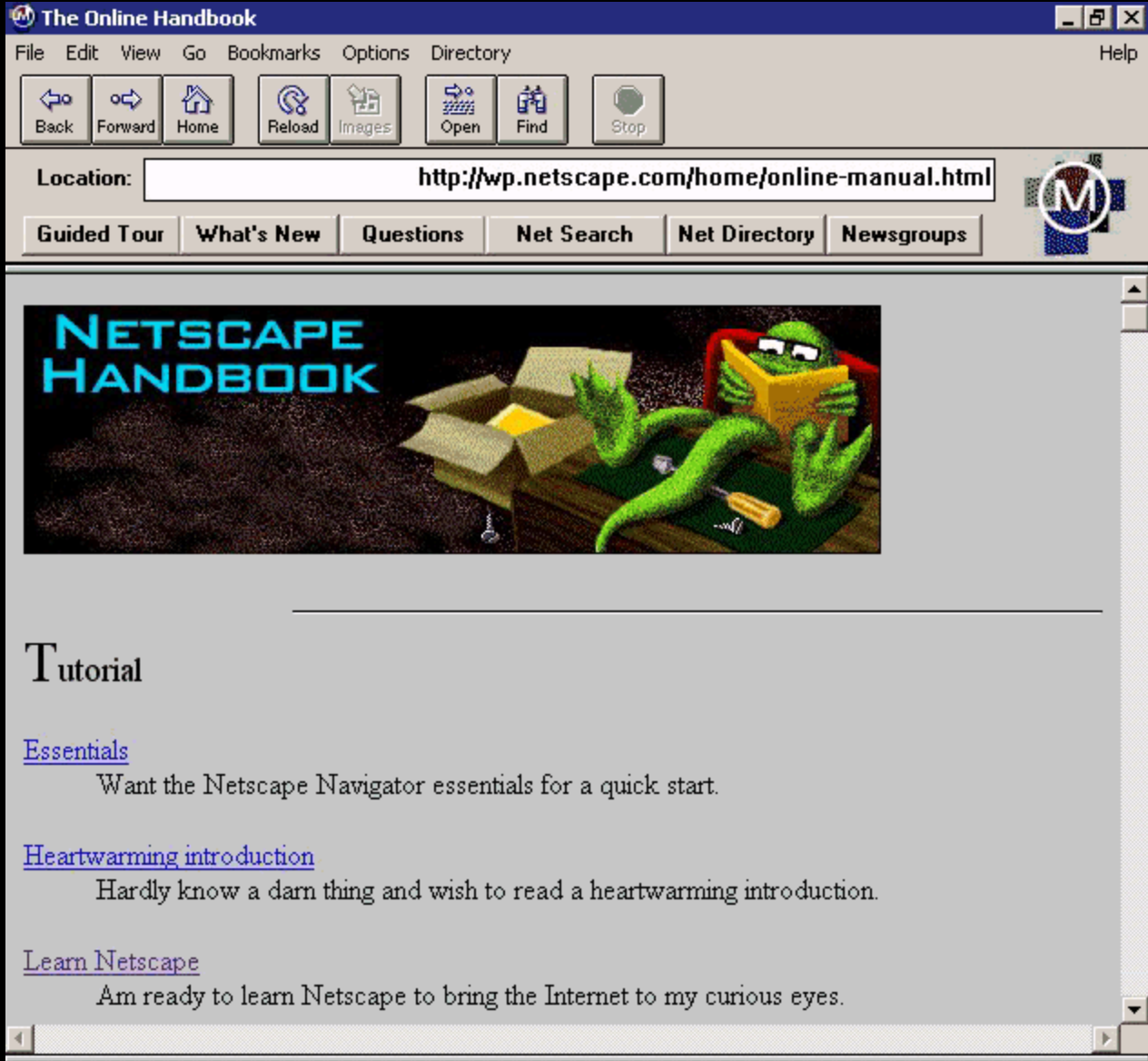 Netscape Navigator. The worlds first commercial Web Browser. Source: Wiki
Netscape Navigator. The worlds first commercial Web Browser. Source: Wiki
Our Browser war begins here with Team Blue, in 1994 when Marc Andreeeson fired the first shots by releasing a program known as Netscape Navigator. Giving many their first taste of the internet, Navigator was the first attempt at a modern era browser, bringing the web to life with images, color and links in a clean graphical user interface. Uptake was rapid, with no real competitors and Navigator immediately held nearly 80% of the market. Given this was the early stages of the dot com boom, this market dominance would not remain unchallenged for long however 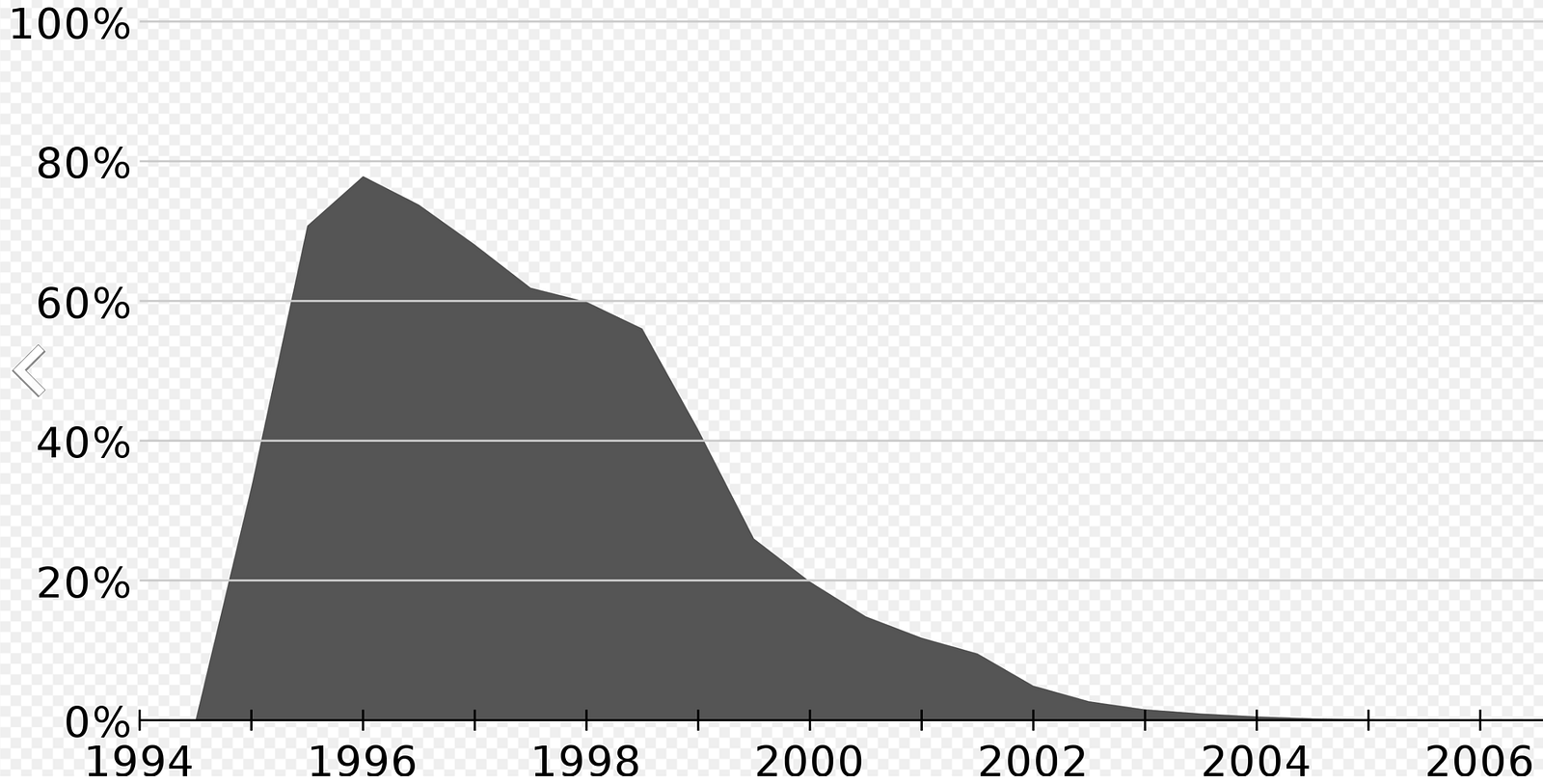 Netscape market share from release to end. Source: Wiki
Netscape market share from release to end. Source: Wiki
Team Red: A new Challenger
By 1995, Microsoft was a large company, dominating the early space and packaging it’s Windows software with retail machines. Noticing the success of Netscape, Team Microsoft went to work building their return salvo. By mid 1995, the time had come and Internet Explorer entered the fray.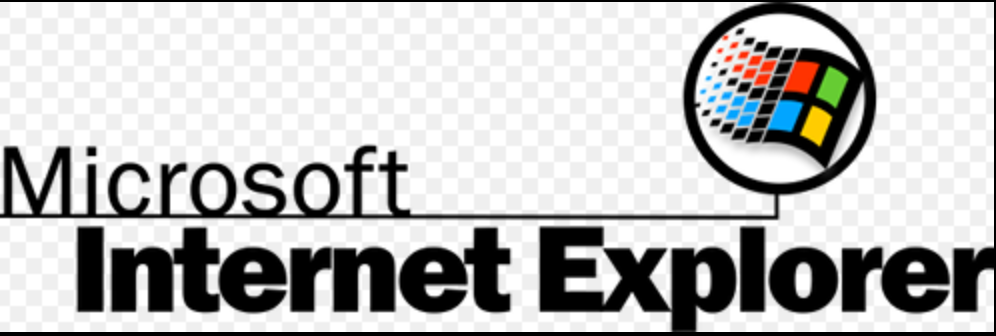 Released in mid 1995, Microsoft took one unique advantage to this battle. Despite their browser being different to Netscape’s, they were able to leverage their success in the personal computer arena for marketing purposes. Bundling their Internet Explorer in with MS Windows as a standard product, Microsoft was able to rapidly grow their market share, and set the stage for the next step’s in our browser war to play out.
Released in mid 1995, Microsoft took one unique advantage to this battle. Despite their browser being different to Netscape’s, they were able to leverage their success in the personal computer arena for marketing purposes. Bundling their Internet Explorer in with MS Windows as a standard product, Microsoft was able to rapidly grow their market share, and set the stage for the next step’s in our browser war to play out.
Features Galore & The Battle of Standards
Despite performing the same job, both browsers had different features and worked in different ways. Delivering both html and css in different ways led to a peculiar yet modern issue where certain websites wouldn’t work with a certain browser, leaving developers in a quandary when designing websites. Despite some form of standardization being needed, it would take some time for this to settle.
In the meantime both browsers continued adding features in an attempt to create an enhanced user interface and more seamless internet experience. Because of this in Internet Explorer we see things like active x, a channel bar and tabbed browsing all added in an attempt to erode Netscape’s market share.
However the battle was far from one sided, with Netscape’s Javascript winning out over Microsoft’s Jscript in the ever evolving format standard. Because of the evolving nature of each new release, it wasn’t uncommon at the time to see logos like “Best viewed in Netscape” which would help early users figure out which format applied to which website. 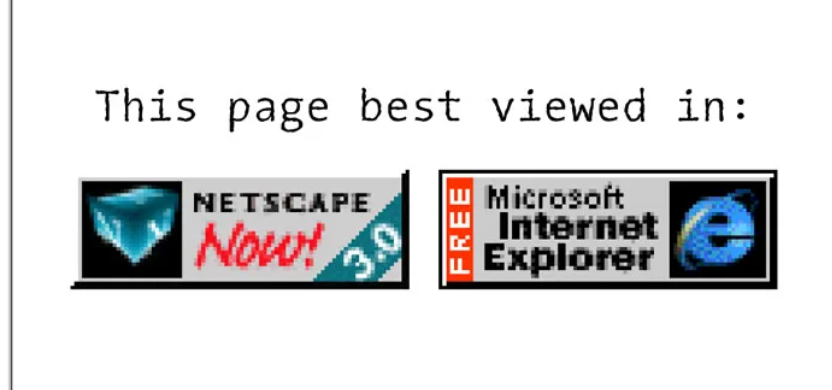 You don’t see this anymore. Source: engadget.com
You don’t see this anymore. Source: engadget.com
The Peak
Despite Netscape launching as a commercial product and having a massive market share it was in a particularly unique situation. Vulnerable due to it’s singular product line and being payware vs freeware, Navigator hung precariously in top position, with Internet Explorer eating away at it. With IE dropping new features with each release and relying on bundling to prop up its market share, this all came to head in October 1997 when Internet Explorer 4 was launched.
We like to point out classical cases of trolling in our articles and it’s here at this point we come across another iconic early day troll. With Microsoft ever confident in their product and sporting a giant E after the IE4 launch, somehow the E ended up on the front lawn of Netscape’s corporate offices. Never ones to back down, Team Blue returned fire and left a sign at Microsoft that read Netscape 72, Microsoft 18 in an apparent dig at Microsoft’s still smaller market share.
However with Netscape retailing at $59.95 while Internet Explorer remained free in the bundle, this market share wouldn’t last forever and by the turn over the new millennium the first war was over. While it would take another few years for Netscape to disappear entirely, by this point Internet Explorer held on despite several other new players scheduled to enter the arena.
Anti Trust and the Second War:
While Microsoft could call themselves the victor in this instance, unfortunately for them a new contender was on the horizon on two different fronts. Firstly, other contenders were into the game meaning that the stage was set for a second browser war based on freeware that any one could download and use. This second battle would lead to the browsers of today, however this was a future issue. The real issue for Microsoft was that in wrapping up the browser war and putting Netscape down they’d attracted far too much attention from the government. This set the stage for America’s biggest anti trust trial to come in to play. 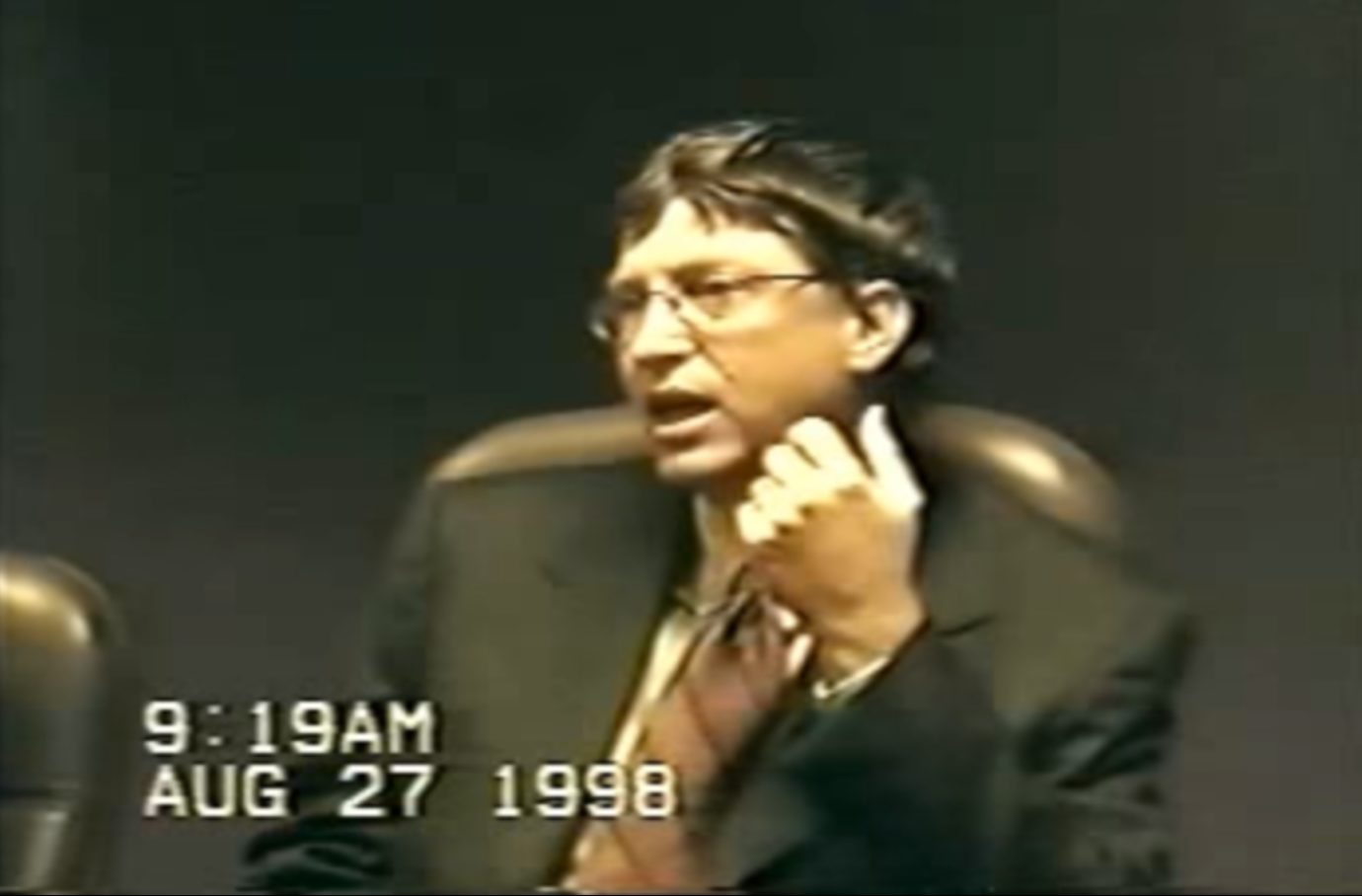
In an event that would see Microsoft founder Bill Gates called to the stand, United States vs Microsoft was a landmark commercial anti trust trial that would see Microsoft answer to charges that they had illegally maintained a monopoly on their position by adding technical and legal restrictions that inhibited other companies from challenging their position. At the end of the hearing Microsoft resolved to change their business practices and was scheduled to go through a court imposed breakdown into smaller companies. This ruling however was challenged and overturned on appeal with Microsoft putting forward an eventual settlement that was accepted by the courts, leading to the end of what has been described as the first browser war.
The Second??? Well that’s an article for another day.
🌟 Enjoyed this article? Support our work and join the community! 🌟
💙 Support me on Ko-fi: Investigator515
📢 Join our Telegram channel for exclusive updates or.
🐦 Follow us on Twitter
🔗 Articles we think you’ll like:
- OSINT Unleashed: 5 Essential Tools for Cyber Investigators
- What the Tech?! GPS Technology
✉️ Want more content like this? Sign up for email updates here
















































![[ℕ𝕖𝕧𝕖𝕣] 𝕊𝕖𝕝𝕝 𝕐𝕠𝕦𝕣 𝔹𝕚𝕥𝕔𝕠𝕚𝕟 - And Now What.... Pray To The God Of Hopium?](https://cdn.bulbapp.io/frontend/images/79e7827b-c644-4853-b048-a9601a8a8da7/1)










